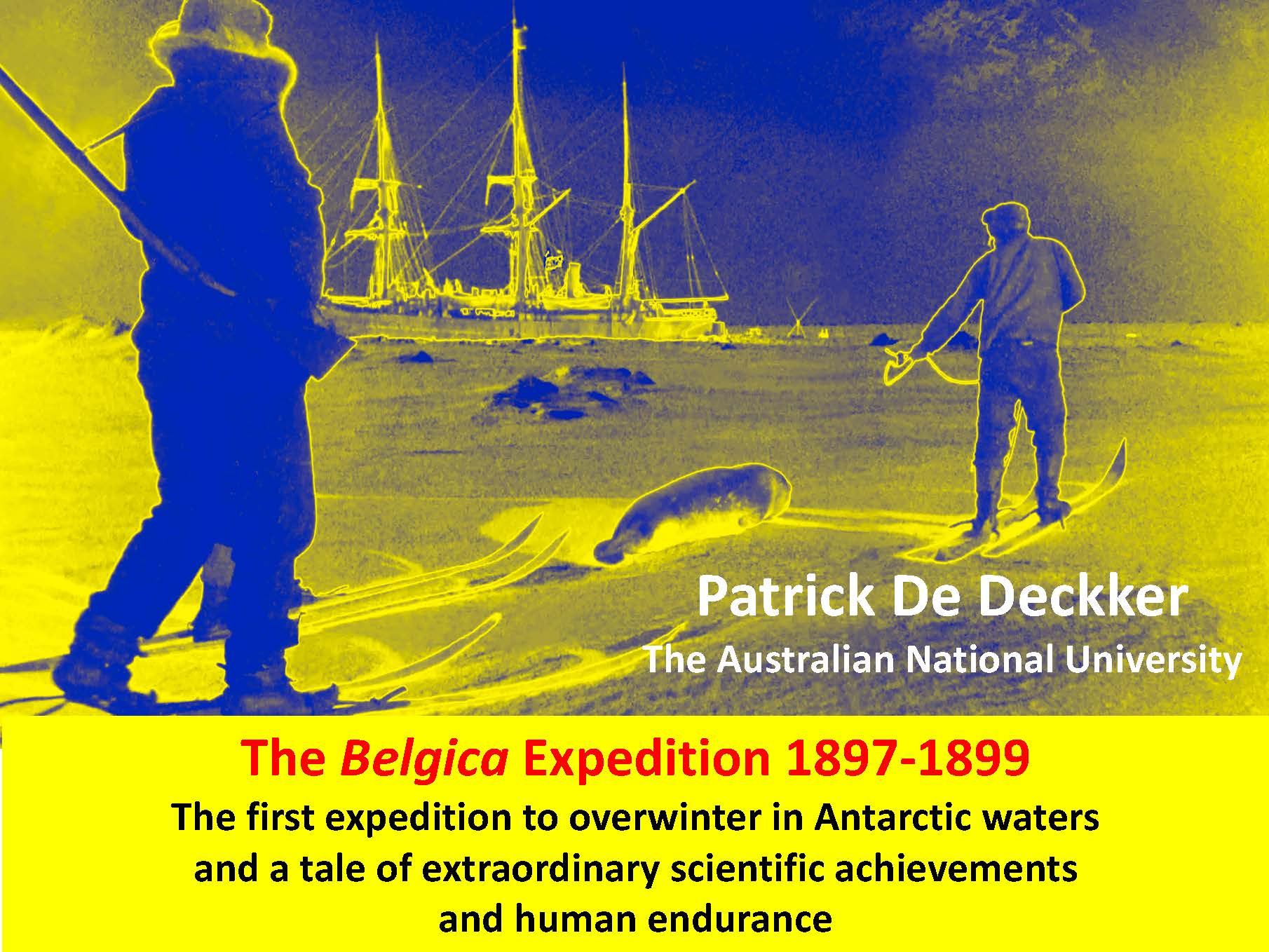There, the expeditioners collected a huge amount of scientific data while also mapping all the islands. Eventually, the vessel continued its voyage westward towards the Bellinghausen Sea where it eventually became trapped in ice for 13 months. The ship drifted in the sea ice for close to 2,000 km. After much duress, the expeditioners who had lost two companions successfully returned to Belgium. All the expeditioners gained international fame during the rest of their career.
Prior to reaching Drake Passage, the expedition carried out much scientific investigation in the vicinity of the Beagle Channel at the southern tip of South America, that included geological, glaciological, biological [fauna and flora], anthropological data collecting. Later on, during the expedition, investigations were broadened and included meteorological, oceanographic, geophysical and ice formation studies that were of great importance to science at the time. Many of these investigations continued while the vessel was trapped in sea ice during which time the expeditioners experienced significant illnesses and deprivation, while also fearing drowning from the possible crushing by movements in the sea ice and some large icebergs.
The numerous scientific reports resulting from the expedition have long been ignored but are resurfacing and being used as they are now available on the internet. Some of the oceanographic and meteorological investigations nowadays are a very important baseline since knowledge that the Antarctic Peninsula is one of the places on the globe facing the largest changes and challenges due to global warming.
The presentation will rely on many archives and Dr De Deckker, Emeritus Professor Australian National University, will have a slide show displaying many photographs taken during the expedition that highlight the numerous activities of the expeditioners.
NIOZ LEZING | ‘Expeditie Belgica 1897-1899’, een verhaal over buitengewoon wetenschappelijk succes en menselijk uithoudingsvermogen op Antarctica
Hoe ziet de zuidpool er uit en is Antarctica een continent of een groep losse eilanden? Zo’n 120 jaar geleden had men nog geen idee en zo vertrok vanuit Antwerpen de eerste wetenschappelijke winter-expeditie ‘Belgica’ om het gebied in kaart te brengen. Bij het slagen van die missie zou België er eerder dan Engeland in slagen het gebied te ontdekken, maar de tocht was niet geheel zonder risico. Het onderzoeksschip en de bemanning moesten barre omstandigheden doorstaan. Zo zat het schip 13 maanden vast in het ijs en lieten twee expeditieleden het leven.
Uiteindelijk leidde expeditie ‘Belgica 1897-1899’ tot belangrijke wetenschappelijke successen. Zo werden er vele nieuwe eilanden ontdekt rondom het Antarctische schiereiland in de buurt van ‘Drake Passage’. Deze ontdekking ligt nog altijd ten grondslag aan hedendaags wetenschappelijk onderzoek naar klimaatverandering omdat opwarming in het Arctische gebied het meest zichtbaar is. De wetenschappers krijgen nog altijd nauwelijks erkenning voor hun werk. Nu het vraagstuk over de opwarming van de aarde steeds urgenter wordt, worden de gedigitaliseerde foto’s van de Belgica onderzoekers gebruikt voor modellen om het toekomstige klimaat zo nauwkeurig mogelijk te voorspellen.
Komende winter gaan NIOZ onderzoekers ook weer op expeditie naar Antarctica om te onderzoeken hoe het ecosysteem reageert op klimaatverandering. De blogs van hun eerste expedities naar Antarctica, tijdens afgelopen winter, zijn op onze site terug te lezen.
Dr. De Deckker, emeritus professor aan de Australische Nationale Universiteit is van oorsprong Belg en doet onderzoek naar de avonturen van de bemanning van de Belgica, gesteund door de Belgische regering.


